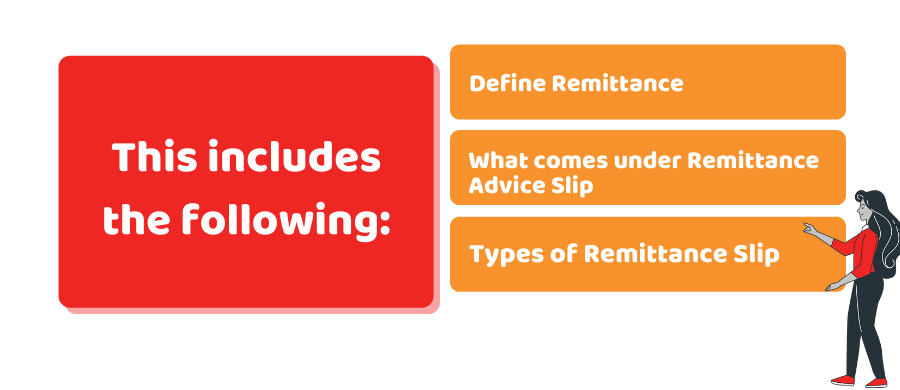Invoicing process is always a bit confusing for the customers and suppliers to understand fully as beginners. The clarity is equally beneficial for both parties as well. It is safe to match the invoice details with payment for the customers, here comes the remittance advice that ensures that suppliers also match the payment and invoice details.
Moreover, it helps to maintain accounts receivable for the suppliers. Now you must be wondering what exactly is remittance advice? and how does it help you? This guide is based on everything that you need to know about remittance slips. This includes the following:
- Define Remittance
- What comes under Remittance Advice Slip
- Types of Remittance Slip
Get an instant quote based on your requirements online in under 2 minutes, Sign up online or request a callback.
Define Remittance:
Deriving from the term ‘remit’ meaning “to ship again”, remittance refers to an amount of money that is despatched again or transferred to some other party. It covers any charge, from payments to invoices, and is usually used with foreign places bills – whilst the person or party is primarily based totally in some other country. In addition, remittances also can cowl private cash transfers made to relatives and family.
So, what’s the remittance? In short, a remittance is evidence of a charge record despatched via the consumer to a company. Generally, it’s used when a consumer desires to allow a company to understand a bill has been paid. We can say that cash transfer slips and remittance slips are the same. They are equally important when it comes to matching invoices with payments.
Because online bills have become more and more popular, remittance slips are necessary as well. However, after a bill has been paid, sending an affirmation e-mail is continually appreciated.
Interested in ACCOTAX? Why not speak to one of our qualified accountants? Give us a call on 0203 4411 258 or request a callback. We are available from 9:00 am – 05:30 pm Monday to Friday.
What comes under Remittance Advice Slip:
Several key factors of data are required in your remittance slip. Most importantly, the slip needs to identify:
- Invoice number
- Supplier’s call and address
- Method of the payment Payment amount
- Your name and address
The remittance slip needs to be issued on the company’s headed paper and comprises touch info for a member of your company who can cope with any queries the dealer may also have.
No, remittance slips aren’t obligatory. However, they may be a courtesy that providers possibly appreciate, as they may be very useful for recordkeeping and figuring out which bills are related to which accounts. Furthermore, it does not require much effort to design such slips. As many organisations will find difficulty in a remittance notice along with the invoice, making it less difficult for clients to ship the desired facts in the ideal format.
Can’t find what you are looking for? why not speak to one of our experts and see how we can help you are looking for.
Types of Remittance Slip:
It’s crucial to notice that remittance is available in many forms:
Basic remittance recommendation – Basic word or letter pointing out the bill range and the amount. Removable Remittance Advice– A bill that incorporates a detachable remittance slip that clients are endorsed to fill in.
Scannable remittance – Remittance slips that may be scanned for digital records.
If you need to give a remittance slip, there are various options:
The Bottom Line:
To sum up the discussion of the remittance advice slip, we can say that the availability of quick online processing is important but invoicing patterns are incomplete without remittance advice slips. We hope this article helped to develop a better understanding.
Disclaimer: This article intends to provide general information based on remittance advice slips.






















































